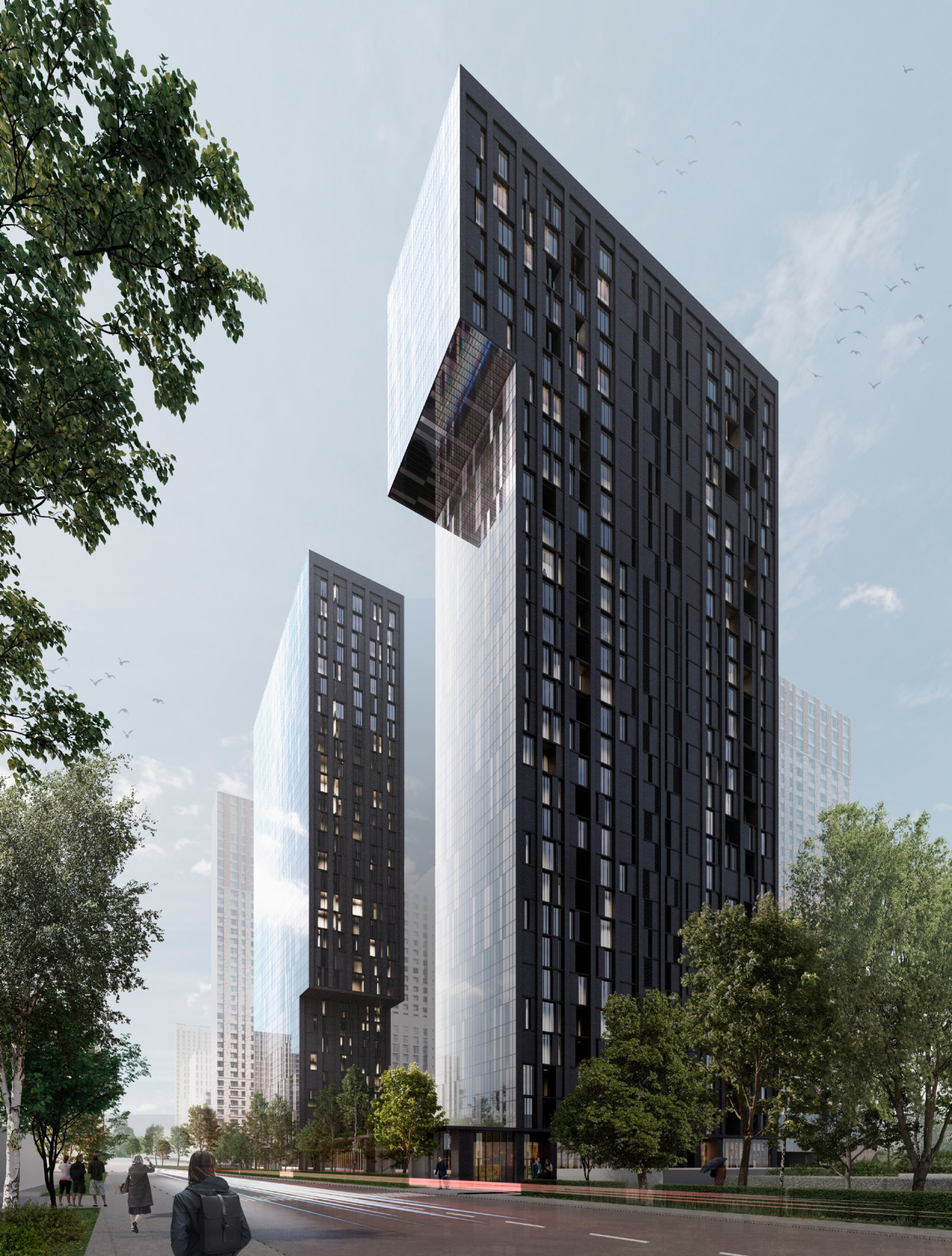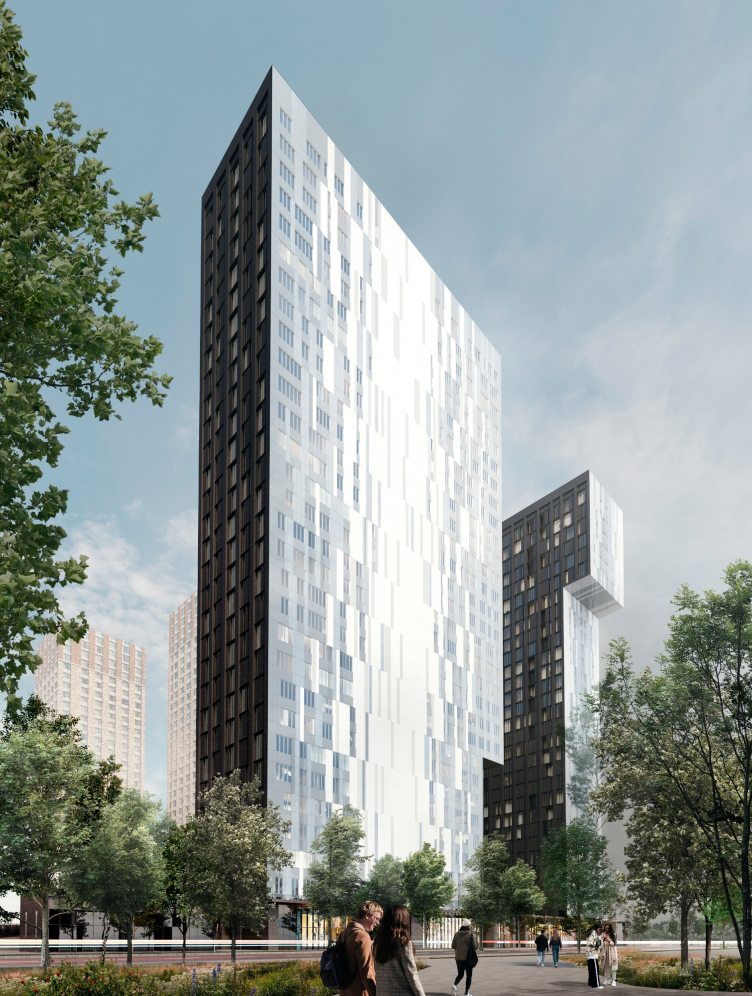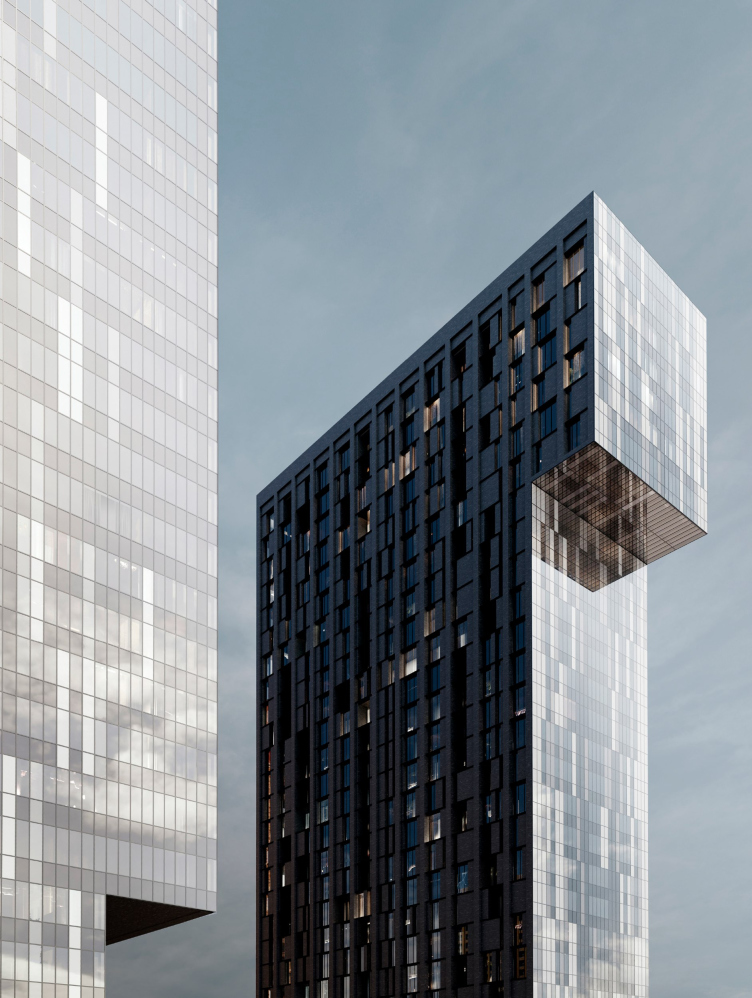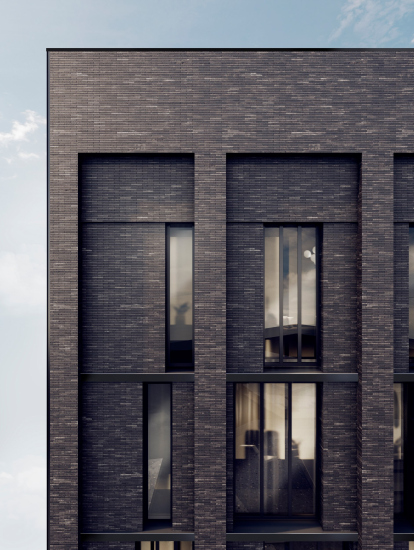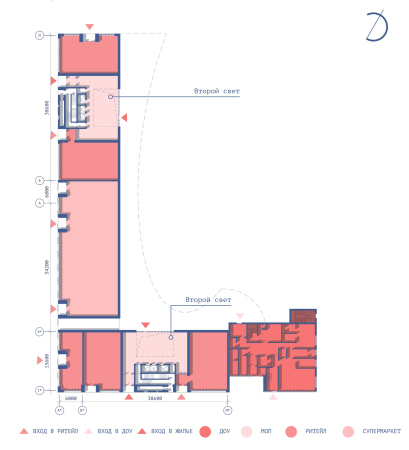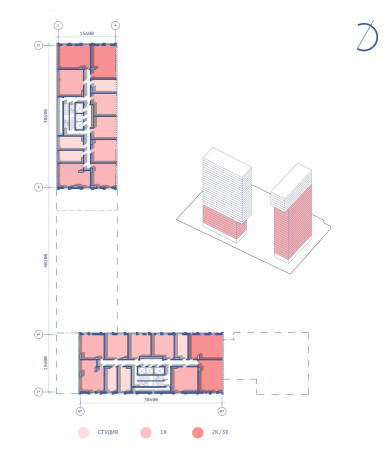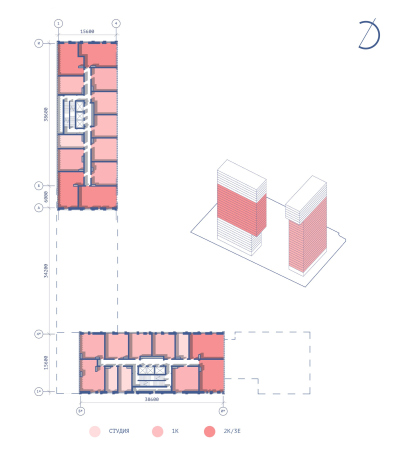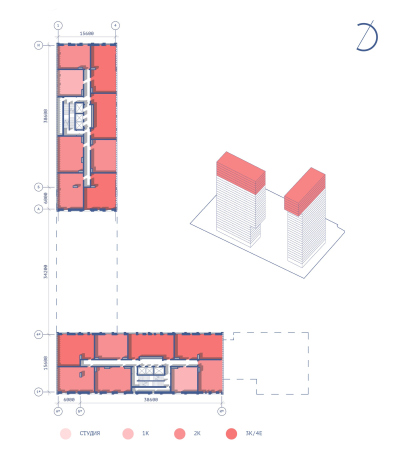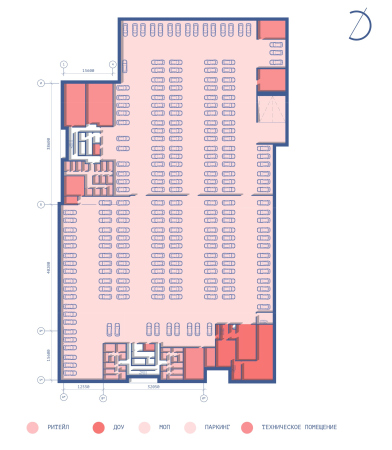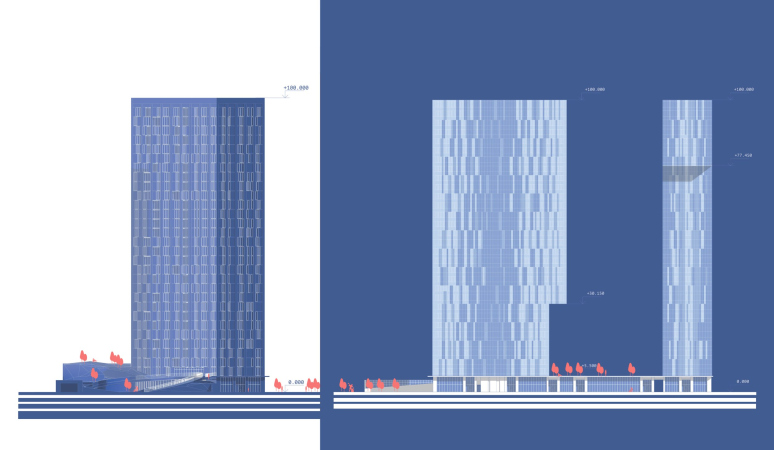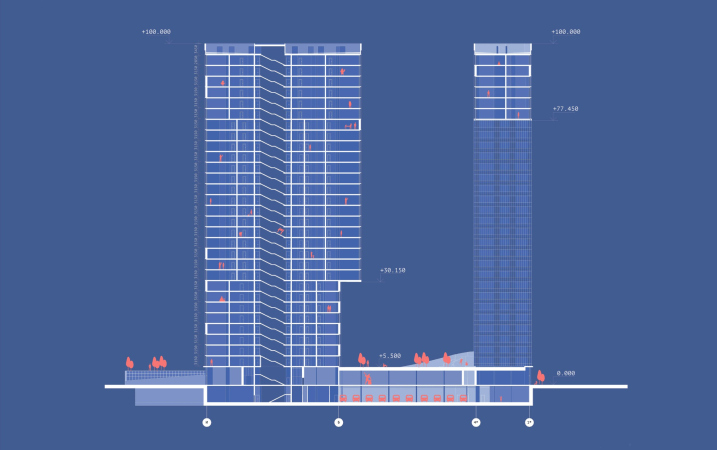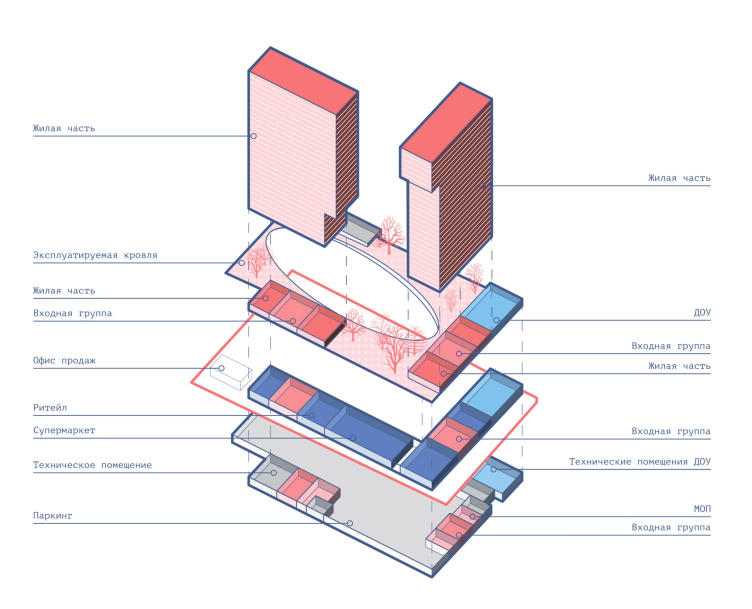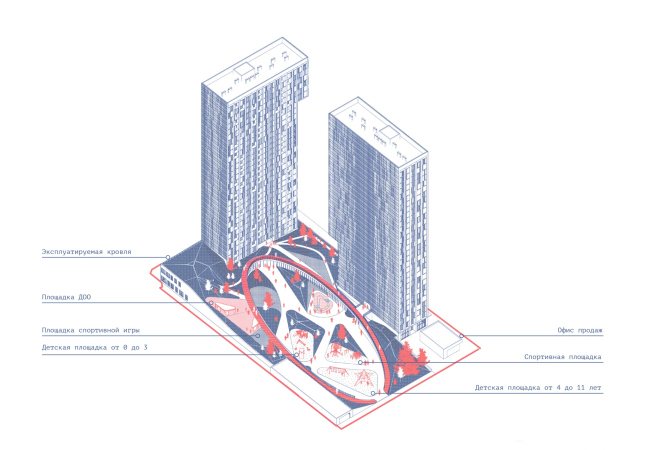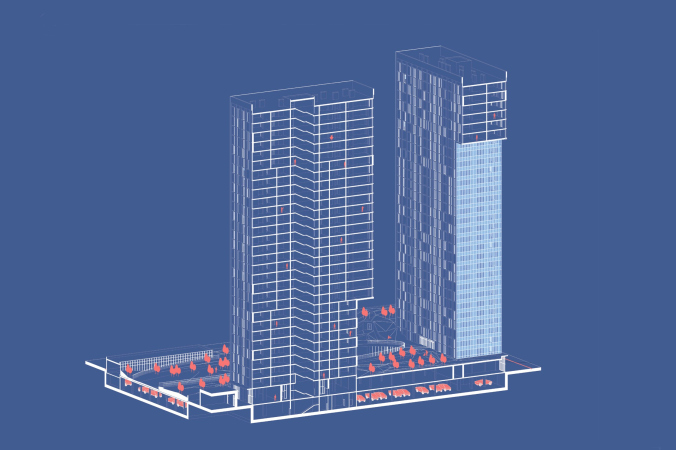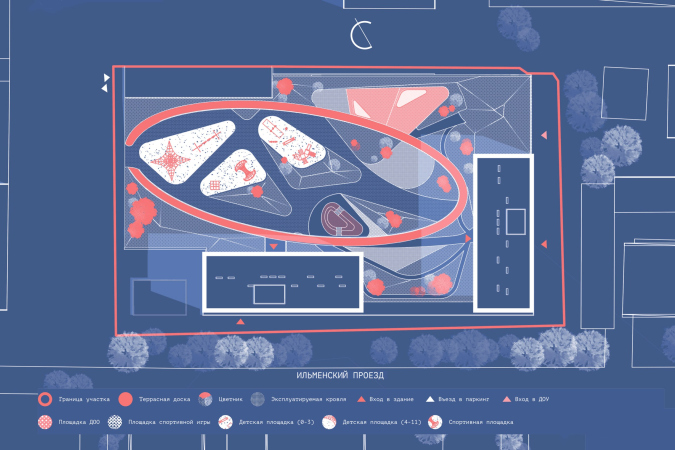The construction territory is not excessively large for the planned height: 1 hectare for two 100-meter towers. The height is justified by both significant density of the neighboring complexes and the remoteness from the city center. At the same time, the volumetric and spatial solution in this case is different from the ones implemented in the nearby housing complexes: in this case, the architects and the customer agreed on the format of towers on a stylobate, which has been popular in Moscow in recent years, naturally combining the volumetric features of three-dimensional construction with the technology of laconic, yet at the same time not devoid of texture, facades.
Ilmensky Level housing complex
Copyright: © KPLN
On the plan, the towers look elongated, and are nothing like a perfect square, which yields a small corridor running on either side of the elevator core. Their volumes are placed along the borders of the site at a 90-degree angle, and are fitted with cantilevered structures on one of the side ends: the “head” of the tower positioned crosswise “gazes” upon the street outside, the other one is positioned longitudinally, gazing south. This way, a dialogue appears, and at a first glance one may think that the cantilevers are identical, but then you realize that one of them is significantly higher, and you can imagine that these two volumes are matching pieces of one simple puzzle that you can turn round, put together – and they will fit perfectly. This is a very common and fail-proof technique for coming up with flashy and laconic solutions for large-scale forms.
Ilmensky Level housing complex
Copyright: © KPLN
This “turning” game continues on the facades, albeit in a different way: the facades launch a narrative of their own because the street is overlooked by glass surfaces, and the sidewalls are executed in brick. Thus, it turns out that in one case glass is used on the sidewalls, and in the other on the longitudinal surface: as if the building’s redline was “sliced” with some hot wire so that the surface around the cut melted slightly.
The regular and the tinted kinds of glass form one single surface; it is livened up by asymmetric pixel inserts of glass of a lighter shade, whose strokes unite each two floors. The brick is dark, and the facades made of it are interpreted as a textured grid of multiple piers, not devoid of the inherent classic character of American skyscrapers: a flat frieze band on top and vertical “blades” running the entire height of the building.
Ilmensky Level housing complex
Copyright: © KPLN
Inside this grid, the windows are separated by slim horizontals, also indulging in pixel asymmetry, rather lively, and – thanks to the recessed balconies – volumetric, akin to some kind of an ancient “cave” city. This way, two surfaces appear: one can see in them a contrast between black and white, earth and sky, yet at the same time rendered more subtle by the nuances of the transparency and the color of the glass, as well as the color and the texture of the brick facades. Furthermore, this pixelization of glass is something like a projection of the brick relief, which brings us back to the “slice” associations: one can easily imagine that the towers are “made” of a material with a certain uneven internal structure, which is rough and textured on the outer surface, but behaves differently on the polished section – retaining at the same time the general principles of construction. This is also one of the ways to endow this pair of buildings with internal integrity; in this case, it is combined with the material component and context – brick responds to the facades of neighboring complexes, while the glass sets a new theme.
The apartment range of the complex correlates with its form making. As a matter of fact, it is the changes in the floor plans that determine the changes in the plastique of the volumes, and this organic combination is something that the architect Sergey Nikeshkin believes to be very important. One tower has in it two types of floor-by-floor plans, the other has three. In the floor plans of the upper floors, the apartments become larger, the share of studios shrinking. Each of the towers is equipped with just one vertical communication core, which spells a corridor system, but this does not affect the floor plans negatively – the complex refers to economy class, and the overwhelming majority of the residential units is constituted by studios and single-room apartments, which by definition are designed in lines, and the larger apartments are placed at the building’s sidewalls. The entrances of the two towers are see-through, and their lobbies are designed as a double-height space.
The towers rest on a stylobate that occupies the entire site almost on the redlines. The stylobate, in turn, organizes the courtyard and hosts a set of necessary functions – stores, a kindergarten, and other public places.
Ilmensky Level housing complex. The functional zoning
Copyright: © KPLN
The oval yard on the stylobate’s roof refers to the images that are rather unusual for Moscow suburbs, for example, to squares of late Italian Renaissance – amongst the former industrial parks shooting off housing complexes, this technique looks unconventional and positive. The roof of the stylobate grows lower as we go deeper inside the block – the father away from the highway the quieter; in addition, its space is double-height, which enhances the privacy of some zones, making them look separate from the street outside, at the same time maintaining the visual contact with the city. This “distributed zoning”, generally valuable in high-rise projects, where the residents value not only their own apartments, but also a competently organized fragment of the city of their own – is a very interesting feature of this project.
***
The contest, however, was won by this project.

The Level Seligerskaya project can be seen on the website https://наш.дом.рф/
The authors of the final version according to the project declaration: Metropolis & Simple Project.


